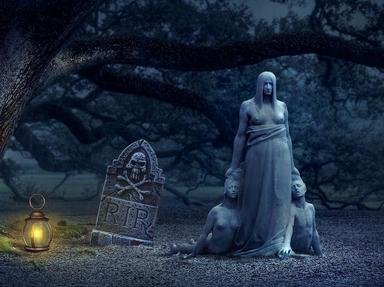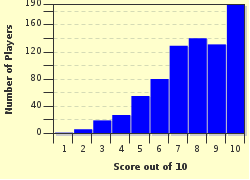Quiz Answer Key and Fun Facts
1. "It was already one in the morning; the rain pattered dismally against the panes, and my candle was nearly burnt out, when, by the glimmer of the half-extinguished light, I saw the dull yellow eye of the creature open . . ."
This book was published in 1818. What is it?
2. "When it "walked" it moved rather like a man on crutches. Two of the blunt "legs" slid forward, then the whole thing lurched as the rear one drew almost level with them, then the two in front slid forward again. At each "step" the long stem whipped violently back and forth; it gave one a kind of seasick feeling to watch it. As a method of progress it looked both strenuous and clumsy-faintly reminiscent of young elephants at play. One felt that if it were to go on lurching for long in that fashion it would be bound to strip all its leaves if it did not actually break its stem. Nevertheless, ungainly though it looked, it was contriving to cover the round at something like an average walking pace."
This book was published in 1951. What is it?
3. "Every nail, claw-scale and spur, every spike
and welt on the hand of that heathen brute
was like barbed steel. Everybody said
there was no honed iron hard enough
to pierce him through, no time proofed blade
that could cut his brutal blood caked claw"
This work's date of publication is unknown, but it's an important part of the Western cultural tradition. What work is this?
4. "The mouth, so far as I could see it under the heavy moustache, was fixed and rather cruel-looking, with peculiarly sharp white teeth. These protruded over the lips, whose remarkable ruddiness showed astonishing vitality in a man of his years. For the rest, his ears were pale, and at the tops extremely pointed. The chin was broad and strong, and the cheeks firm though thin. The general effect was one of extraordinary pallor."
Which classic vampire novel is this excerpt from?
5. "No, nor did he believe it even now. Though he looked the phantom through and through, and saw it standing before him; though he felt the chilling influence of its death-cold eyes; and marked the very texture of the folded kerchief bound about its head and chin, which wrapper he had not observed before; he was still incredulous, and fought against his senses."
Which great ghost story is this description from?
6. "It was a terrible, indescribable thing vaster than any subway train - a shapeless congeries of protoplasmic bubbles, faintly self-luminous, and with myriads of temporary eyes forming and un-forming as pustules of greenish light all over the tunnel-filling front that bore down upon us, crushing the frantic penguins and slithering over the glistening floor that it and its kind had swept so evilly free of all litter."
Which work, set in Antarctica, is this description from?
7. "There he lay, a vast red-golden dragon, fast asleep; a
thrumming came from his jaws and nostrils, and wisps
of smoke, but his fires were low in slumber. Beneath
him, under all his limbs and his huge coiled tail, and
about him on all sides stretching away across the
unseen floors, lay countless piles of precious things,
gold wrought and un-wrought, gems and jewels, and
silver red-stained in the ruddy light."
Which work of fantasy does this monster appear in?
8. "They all agreed that it was a huge creature, luminous, ghastly, and spectral. I have cross-examined these men, one of them a hard-headed countryman, one a farrier, and one a moorland farmer, who all tell the same story of this dreadful apparition, exactly corresponding to the hell-hound of the legend. I assure you that there is a reign of terror in the district, and that it is a hardy man who will cross the moor at night."
Which work is about this horrible creature and those who must face it?
9. "And I beheld another 'BEAST' coming up out of the EARTH; and he had two horns like a lamb, and he spake as a DRAGON. And he exerciseth all the power of the 'First Beast' before him, and causeth the earth and them which dwell therein to worship the 'First Beast,' whose deadly wound was healed."
Which famous work is this description from?
10. "ONCE UPON A TIME, not so long ago, a monster came to the small town of Castle Rock, Maine..."
Which 1981 work begins with these words?
Source: Author
john_sunseri
This quiz was reviewed by FunTrivia editor
agony before going online.
Any errors found in FunTrivia content are routinely corrected through our feedback system.


